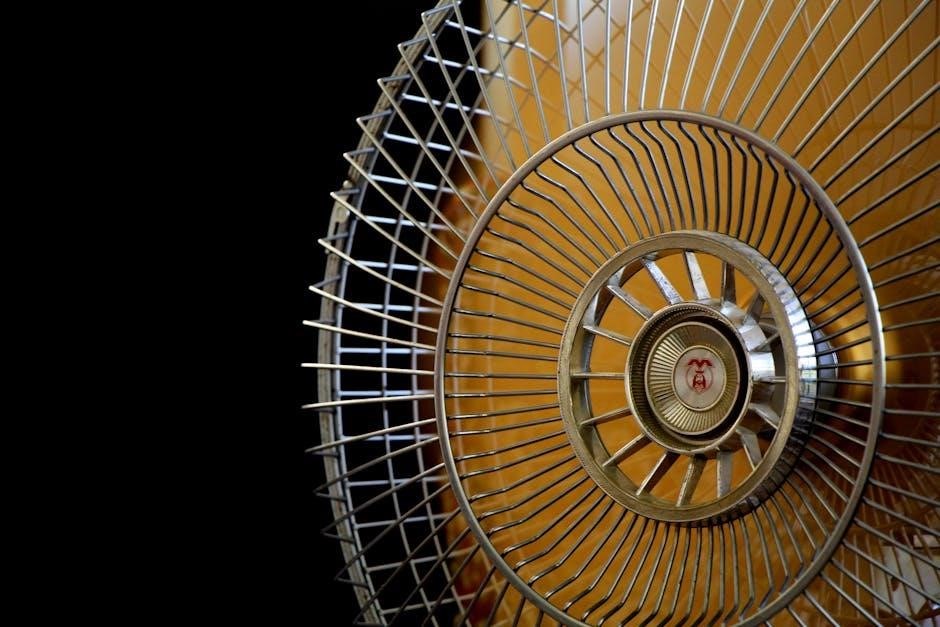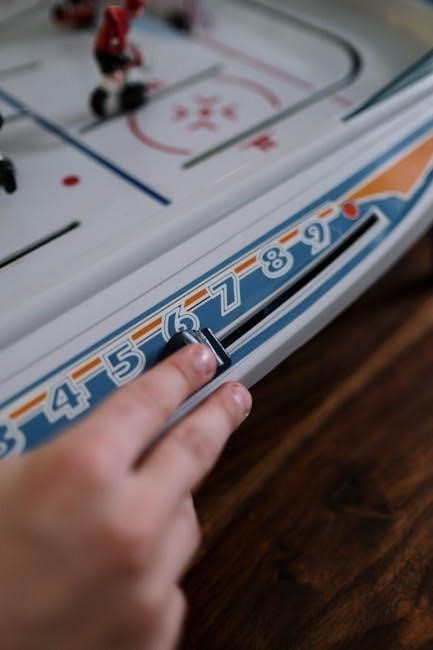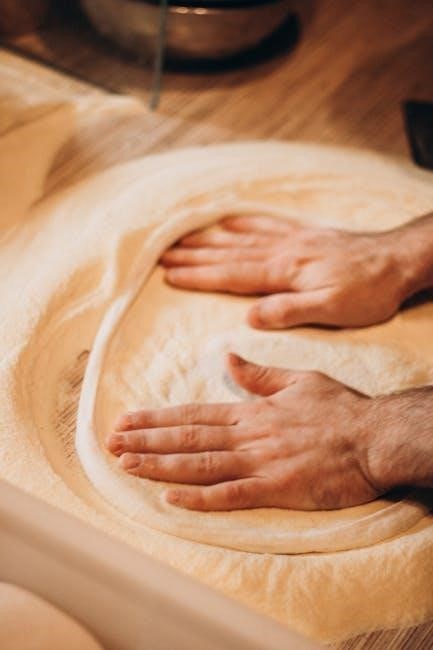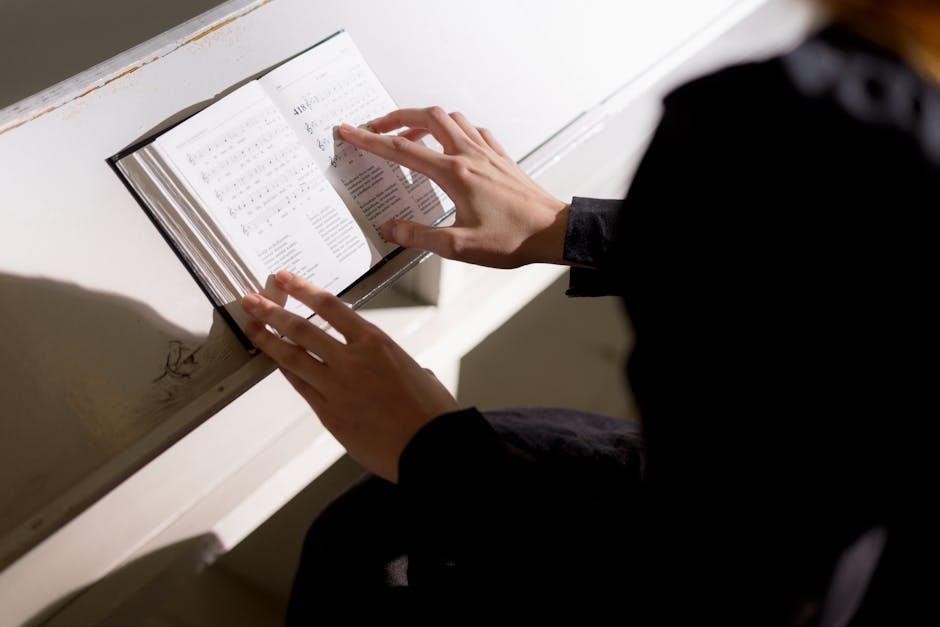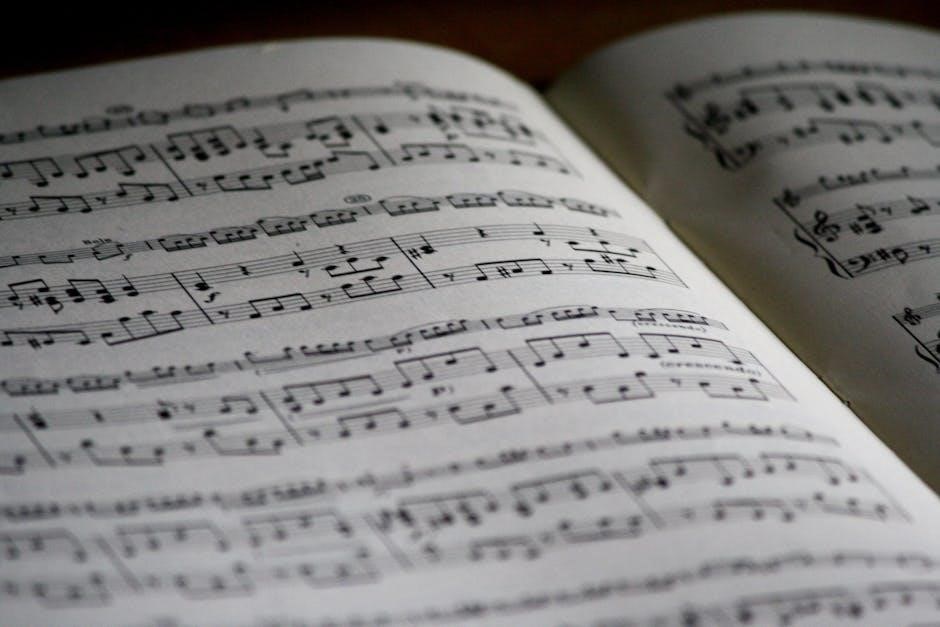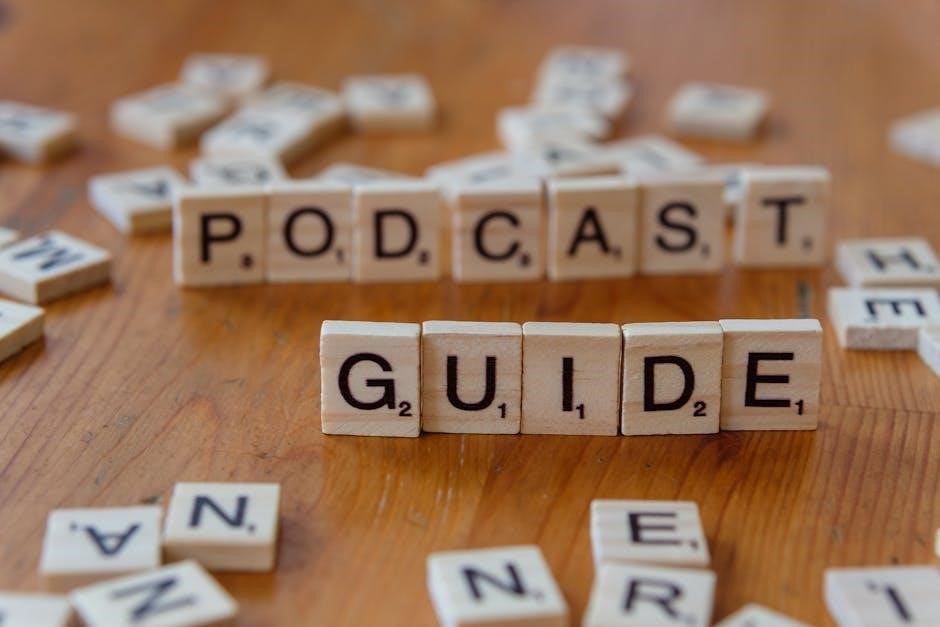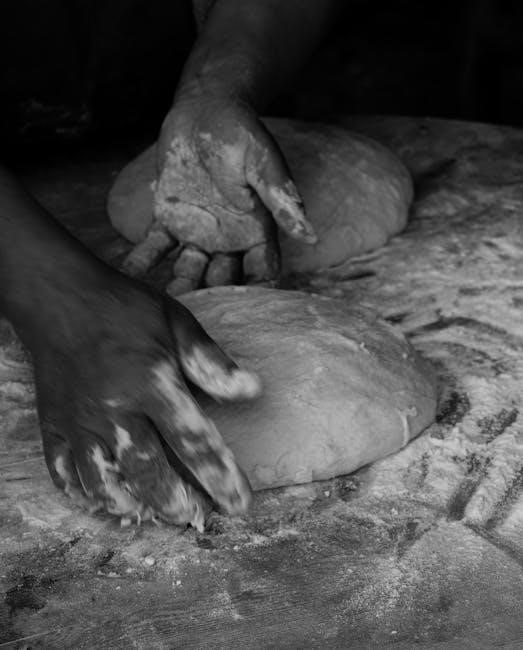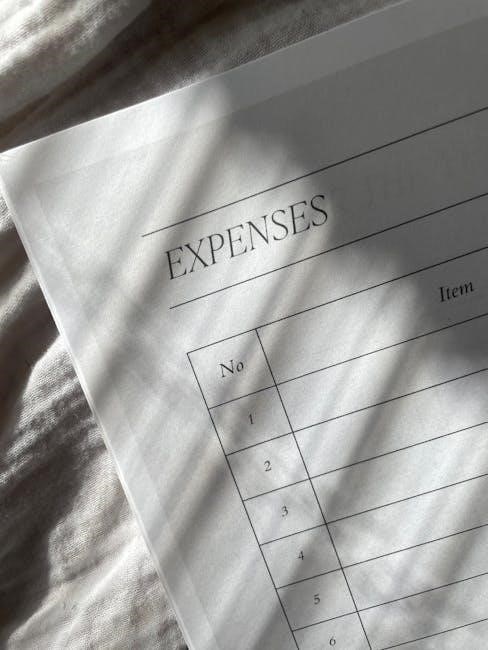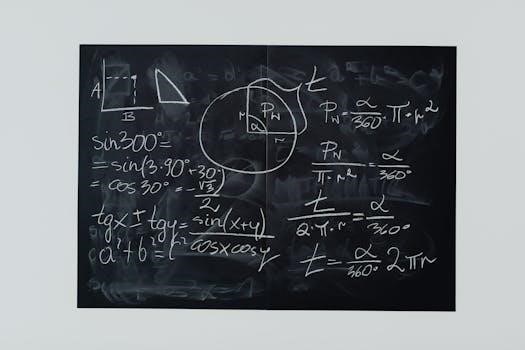The altissimo register on the alto saxophone refers to the high notes above the staff, typically starting from E and extending beyond. These notes add brightness and complexity to music, requiring precise fingerings and embouchure control. Mastering this range enhances musical expression and technical versatility, making it a key focus for advanced saxophonists.
What is the Altissimo Register?
The altissimo register on the alto saxophone refers to the high notes above the staff, typically starting from E and extending into the upper range of the instrument. These notes are produced using specific fingerings and embouchure techniques, allowing saxophonists to access pitches that add brightness and complexity to their playing. The altissimo register is not just about playing high notes; it also involves achieving proper intonation, tone quality, and control; While challenging to master, this range is essential for advanced repertoire and improvisation. Finger charts are invaluable tools for navigating these notes, as they provide clear guidance on finger placements and alternatives to suit different musical contexts and saxophone setups.
Importance of Altissimo Finger Charts
Altissimo finger charts are essential tools for saxophonists aiming to master the high register of their instrument. These charts provide clear, visual representations of finger placements for notes above the staff, helping players achieve accurate intonation and tone. They are particularly useful for understanding the complex fingerings required to produce these high pitches consistently. Additionally, finger charts often include alternative fingerings, which can be crucial for navigating fast passages or achieving specific tonal colors. By offering a structured approach, they help musicians build confidence and precision in the altissimo range. Whether for practice, performance, or exploration, these charts serve as invaluable guides for unlocking the full potential of the alto saxophone’s upper register.
Understanding the Alto Saxophone Altissimo Finger Chart
The altissimo finger chart is a visual guide detailing finger placements for high notes above the staff. It includes standard and alternative fingerings, ensuring accurate intonation and tone.
Structure of the Chart
The altissimo finger chart is organized to clearly present fingerings for high notes above the staff. It typically includes notes from E upwards, with each note accompanied by one or more fingerings. The chart often lists a primary fingering and alternatives, which may vary based on the saxophone’s make or the player’s preference. Some charts also indicate split-tone fingerings, which can produce unique tonal effects. The layout usually progresses chromatically, covering all keys within the altissimo register. Visual cues, such as diagrams or annotations, help clarify complex finger placements. This structured approach ensures players can quickly identify the most suitable fingering for their instrument and musical context, making it an essential tool for mastering high-range playing.
Key Notes and Fingerings
The altissimo register typically begins at E and extends to high F#, G, A, B, and C. Each note has specific fingerings, often with primary and alternative options. For example, E is usually played with the first finger of the left hand on the octave key and the first finger of the right hand on the lower trill key. F and F# may involve additional keys for pitch accuracy. G and A often require precise finger placement on the upper keys, while B and C may use alternate fingerings for better intonation. Some charts highlight fingerings that produce split tones or facilitate fast passages. These fingerings vary slightly across saxophone models, making the chart adaptable to different instruments and player preferences.
Common Challenges and Solutions
Mastering the altissimo register presents challenges, including pitch accuracy, tone consistency, and finger dexterity. Many players struggle with intonation, especially on notes like high F and G, which tend to be sharp. To address this, using alternate fingerings or adjusting embouchure can help. Another issue is finger coordination for complex passages, which requires targeted exercises. Additionally, reed strength and mouthpiece setup significantly impact altissimo performance; a harder reed often provides better control. Equipment differences, such as the presence of a high F key, can also affect fingering choices. Regular practice with long tones and scales, along with studying finger charts, helps overcome these challenges and improves overall mastery of the altissimo range.
Basic Fingerings for Altissimo Notes
Basic fingerings for altissimo notes provide a foundation for playing high-range notes clearly and accurately. Starting with E and F, these fingerings are essential for building control and tone consistency.
Fingering for E and F
The fingering for E and F in the altissimo register is foundational for alto saxophonists. For E, the primary fingering involves the first finger of the left hand on the octave key and the first finger of the right hand on the F key. This setup ensures clarity and pitch accuracy. For F, the fingering often includes the high F key, which helps maintain intonation and tone quality. Alternate fingerings may substitute the high F# key for F, offering a brighter sound. Proper embouchure and air support are crucial for these notes. Players should experiment with these fingerings to find the most responsive and in-tune options for their instrument, as variations exist based on saxophone make and reed strength.
Fingering for G and A
The G and A fingerings in the altissimo register are slightly more complex but essential for a complete upper range. For G, the primary fingering often involves the high F key combined with the first and second fingers of the left hand. This provides stability and pitch accuracy. For A, the fingering typically includes the high F# key, which helps maintain clarity and intonation. Some players prefer using the altissimo A key for a brighter sound. Alternate fingerings may involve subtle adjustments, such as adding the G# key for A to enhance resonance; Experimentation is key, as different saxophones respond differently. Proper reed strength and embouchure are critical for consistent tone in these higher notes. These fingerings are foundational for mastering fast passages and complex melodies in the altissimo range.
Fingering for B and C
The B and C fingerings in the altissimo register are among the most challenging but rewarding. For B, the primary fingering often involves the high F key combined with the left-hand index finger and the right-hand pinky. This setup ensures clarity and pitch accuracy. For C, the fingering typically includes the high F# key and the left-hand middle finger, which helps maintain a bright and focused tone. Alternate fingerings for C may involve using the altissimo key, which can produce a more intense sound. These fingerings require precise embouchure and reed strength to avoid pitch discrepancies. Experimentation is crucial, as saxophone models vary, and some fingerings may need adjustment for optimal performance. Mastering these fingerings opens up advanced musical possibilities in the upper range.
Advanced Fingerings and Alternatives
Advanced fingerings provide alternate options for fast passages and split tones, while others modify tone and pitch at extreme dynamics, enhancing musical expression and technical versatility.
Alternate Fingerings for Fast Passages
Alternate fingerings are essential for navigating fast passages in the altissimo register. These fingerings often prioritize ease of playability and dexterity over tone stability, allowing for smoother transitions between high notes. Some fingerings are specifically designed to reduce finger movement, making intricate passages more accessible. For example, certain alternate fingerings for notes like G and A can facilitate quicker shifts while maintaining pitch accuracy. Additionally, these fingerings can help manage air pressure and embouchure adjustments, which are critical at high velocities. While some alternate fingerings may slightly compromise tone quality, they are invaluable in demanding musical contexts. Experimenting with these fingerings is crucial to finding the best fit for both the passage and the player’s technique.
Split-Tone Fingerings
Split-tone fingerings are specialized fingerings designed to produce a unique, edgy sound by creating a split or double tone. These fingerings are particularly useful for advanced techniques and specific musical effects. They often involve slightly altering the standard fingerings to create a disruption in the tone, resulting in a split or growling sound. Some fingerings are naturally more prone to producing split tones, while others require precise adjustments in embouchure and air pressure. These fingerings are noted in many alto saxophone altissimo finger charts as they provide feedback for players looking to explore tonal variations. Experimenting with split-tone fingerings can enhance a player’s ability to achieve desired tonal effects in the high register.
Dynamic and Pitch Modifications
Dynamic and pitch modifications in the altissimo register allow saxophonists to tailor their sound to specific musical demands. Certain fingerings enable subtle adjustments in tone, color, and pitch, even at extreme dynamic levels. For instance, alternate fingerings can brighten or darken the tone, while others facilitate precise pitch control. These modifications are especially useful for achieving the desired musical effect in fast passages or for adding expressive nuances. Many alto saxophone altissimo finger charts include such fingerings, providing players with tools to enhance their technical and artistic expression. By exploring these options, saxophonists can expand their tonal palette and master the high register with greater versatility and precision.
Resources for Altissimo Finger Charts
Free alto saxophone altissimo finger chart PDFs are widely available online, offering detailed fingerings for high notes. Websites like Jazzwise and Ward Baxter provide comprehensive charts, while Scott Paddock’s Sax School includes exercises for practice. These resources help players master the altissimo range efficiently.
Free PDF Downloads
Several websites offer free PDF downloads for alto saxophone altissimo finger charts, providing detailed fingerings for high notes. Jazzwise and Ward Baxter provide comprehensive charts, while Scott Paddock’s Sax School includes exercises. These resources cover standard and alternate fingerings, allowing players to compare options. Many PDFs also include split-tone fingerings and tips for mastering the altissimo range. Websites like GetYourSaxTogether and BetterSax offer free downloads tailored for alto sax, ensuring access to high-quality materials. These charts are essential for saxophonists aiming to improve their technique and expand their musical capabilities. Downloading these PDFs is a great way to start practicing altissimo notes effectively.
Recommended Online Resources
For mastering the alto saxophone altissimo register, several online resources provide exceptional guidance. Websites like Jazzwise and Ward Baxter offer detailed altissimo finger charts and exercises. Scott Paddock’s Sax School is another excellent resource, featuring video tutorials and PDF downloads. Additionally, GetYourSaxTogether and BetterSax provide comprehensive materials, including fingerings and warm-up routines. These platforms cater to both beginners and advanced players, ensuring a smooth learning curve. Many of these resources are free or low-cost, making them accessible to saxophonists worldwide. By utilizing these online tools, players can refine their technique and achieve mastery of the altissimo range with ease and confidence.
Expert Recommendations
Experts like Matt Olson and Christopher Barrick emphasize the importance of tailored fingerings for the alto saxophone altissimo register. They suggest experimenting with different fingerings to find what works best for your instrument and reed strength. Jay Metcalf recommends starting with basic fingerings and gradually exploring alternatives for fast passages and tone modification. Many experts provide free PDF downloads of their preferred fingerings, such as those from Jazzwise and Ward Baxter. These resources often include exercises and tips for mastering high notes. By following expert guidance, saxophonists can develop a strong, consistent altissimo technique and expand their musical possibilities. These recommendations are invaluable for players seeking to refine their skills and achieve professional-level performance.
Practicing Altissimo Techniques
Consistent practice is essential for mastering the altissimo register. Start with warm-ups and long tones to build control. Use specific exercises from PDF charts to target high notes and improve tone consistency. Regular practice ensures progress and confidence in playing the upper range effectively.
Warm-Up Exercises
Effective warm-up exercises are crucial for developing the altissimo register. Begin with long tones to establish a consistent tone and pitch accuracy. Incorporate lip slurs and scales to build flexibility and strength. Use exercises from alto saxophone altissimo finger charts to target high notes gradually. Start with middle-range notes and ascend to the upper register, ensuring smooth transitions. Practice chromatic scales and arpeggios to improve finger dexterity and coordination. Additionally, focus on breath control and embouchure relaxation to maintain clarity in the high range. Regular practice of these exercises will enhance your ability to play altissimo notes with precision and confidence.
Specific Exercises for Altissimo
Mastering the altissimo register requires targeted exercises. Begin with long tones to develop pitch accuracy and tone consistency. Practice lip slurs and scales in the upper range to improve finger dexterity and embouchure control. Use chromatic scales and arpeggios to build technical proficiency. Incorporate exercises from alto saxophone altissimo finger charts, focusing on notes like E, F, G, and A. Start with slower tempos and gradually increase speed as comfort grows. Alternate between basic and alternate fingerings to enhance versatility. Additionally, practice trills and split-tones to refine articulation and tone quality. Regularly reviewing these exercises will strengthen your command of the altissimo range and expand your musical expression.
Improving Tone and Control
Mastering the altissimo register demands precise tone and control. Start by developing a consistent embouchure and breath support, as these are foundational for producing clear high notes. Practice long tones in the altissimo range to refine pitch accuracy and tone quality. Use scales and arpeggios to improve finger dexterity and coordination. Experiment with dynamic variations to enhance control over soft and loud playing. Incorporate exercises from alto saxophone altissimo finger charts to explore fingerings that suit your reed strength and saxophone setup. Regularly record your practice to identify areas for improvement. Over time, these exercises will help you achieve a rich, resonant tone and precise control in the upper register.
Tips for Mastering the Altissimo Register
Experiment with fingerings to find what works best for your saxophone and reed strength. Focus on developing a consistent embouchure and breath support for stable high notes. Regular practice of long tones and scales will improve tone and control. Use alto saxophone altissimo finger charts as a guide to explore alternate fingerings and enhance technical precision. Record your sessions to track progress and refine your technique. Patience and dedication are key to mastering this challenging yet rewarding range.
Experimentation with Fingerings
Experimenting with fingerings is crucial for mastering the altissimo register. Since saxophones vary in make and model, no single fingering works universally. Players must test different combinations to find what produces the best tone and pitch accuracy. Reed strength also plays a significant role, as softer reeds may require different fingerings than harder ones. Additionally, some fingerings are more effective in specific musical contexts, such as fast passages or split-tone techniques. By exploring alternate fingerings, saxophonists can develop a personalized approach that suits their instrument and playing style. This process of trial and error, guided by resources like alto saxophone altissimo finger charts, helps refine technique and expand musical possibilities.
Importance of Reed Strength
Reed strength significantly impacts the performance of altissimo notes on the alto saxophone. A reed that is too soft may produce unstable high notes, while a harder reed can improve pitch accuracy and tone consistency. The altissimo register demands a balance between brightness and control, which is heavily influenced by reed strength. Players often experiment with different reed strengths to find the optimal match for their mouthpiece and saxophone setup. Many altissimo finger charts suggest specific reed strengths for achieving the best results, especially for advanced techniques like split tones and dynamic modifications. Proper reed selection enhances the overall playability and sound quality in the upper range, making it a critical factor in mastering the altissimo register.
Equipment Considerations
Equipment plays a crucial role in mastering the altissimo register on the alto saxophone. The mouthpiece, neck, and pad setup significantly affect the ease of playing high notes. A well-maintained saxophone with proper pad sealing ensures better airflow and pitch accuracy. The choice of mouthpiece and reed strength must align with the player’s embouchure and breath control. Additionally, the material and make of the saxophone can influence the responsiveness of altissimo fingerings. While no single setup works universally, experimenting with different equipment configurations can help players find their optimal sound and control. Using a reliable altissimo finger chart can also aid in testing various equipment setups to achieve the desired tone and precision in the upper range.




